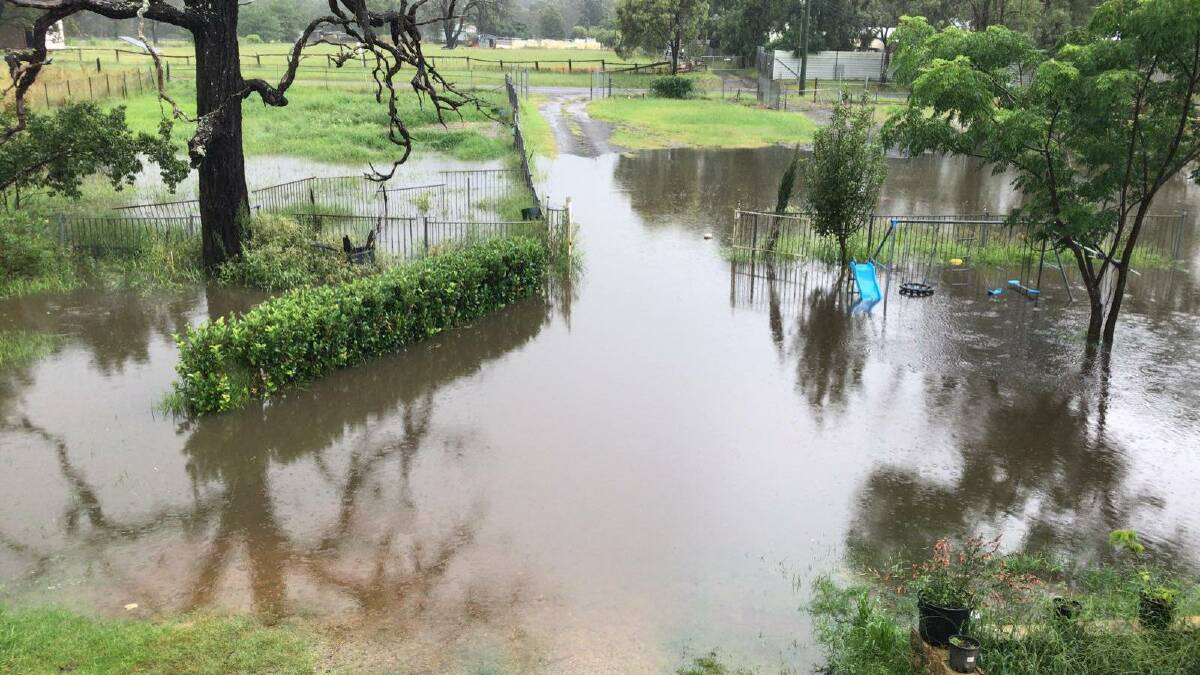
Flood victims are concerned about their financial states as rivers rise and flaws in the financial assistance funding become apparent.
Create a free account to read this article
$0/
(min cost $0)
or signup to continue reading
Kate Ott from the Sydney Polo Club in Richmond north-west of Sydney said she still had not received a flood grant from last year's devastating flood, that was offered by the NSW Rural Assistance Authority (RAA) and funded by the Commonwealth-State Disaster Recovery Funding Arrangements.
The cut-off period for the grant was October 31, 2021, but Ms Ott said the RAA had yet to complete all applications for October 2021.
"We haven't gotten the flood grant from last year yet, the last flood. So that is hard too, that side of things. [It's] one thing on top of another."
Sahar Bushir, who also lives near Richmond, was affected by the March 2021 floods and was preparing to be flooded again on Thursday.
"We were inundated with water up to the door handles. It was pretty bad considering everything was rebuilt after that, and then this time we used concrete to flood-proof," she said.
While Ms Bushir and her family did receive the disaster recovery payment last year, she said it was not enough to fix the damages and there were still out-of-pocket expenses.
The set amount for the payment is $1000 per eligible adult and $400 per eligible child.
She said she did not have flood insurance because it was too expensive and that the disaster payment should be increased to keep up with the rising cost of living.
Around 52,000 claims for disaster recovery financial aid have been lodged with the federal government - and paid - since Monday, Government Services Minister Linda Reynolds said.
The claims amount to more than $62.7 million in payments and allowances. "More than 95 per cent of claims are coming in via myGov, which remains the simplest and easiest way to claim," Senator Reynolds said.
Hawkesbury City Council Mayor Patrick Conolly said financial assistance to rebuild council buildings and repair damage did not actively include help from state and federal governments in delivering the funding.
"In terms of the support they provide to council in recovery from these events ... what they don't fund is any way to do the work.
"We had about $30 million of damage from the last flood, which we got funded from the state and federal government. But essentially, we have to deliver that $30 million worth of work in addition to our normal workload and so that that is a concern to council that if these events are going to be more frequent," he told ACM as floodwaters rose around the Hawkesbury region north-west of Sydney.
He said the cost of rebuilding has to be passed onto ratepayers, "even if the actual infrastructure itself funded by the government still takes a lot of project management from Council".
The concern for many flood victims has lead to the creation of campaigns on crowdfunding site like GoFundMe.
The increasing incidence of disasters like floods has lead philanthropic organisations like resources billionaire Andrew "Twiggy" Forrest's Minderoo Foundation to call on the government to invest more in prevention.
Some 97 per cent of national spending is in response and recovery after a disaster, while only three per cent is spent on preparation, said Minderoo's 's Fire and Flood Resilience chief executive Adrian Turner.
"We think the most important part will be how do we ensure greater preparation and resilience before the crisis before the flood, before the fire - and that's where the country should be investing more of its financial resources."
Mr Turner said that investment in preparation provides an economic gain for Australia when faced with disasters, with savings of billions of dollars.


